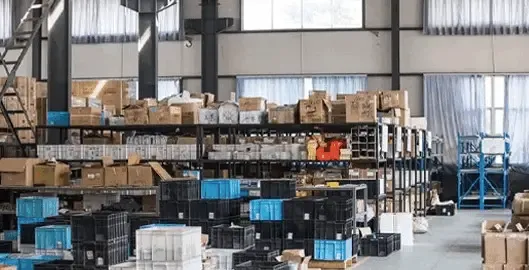
-
 Afrikaans
Afrikaans -
 Albanian
Albanian -
 Amharic
Amharic -
 Arabic
Arabic -
 Armenian
Armenian -
 Azerbaijani
Azerbaijani -
 Basque
Basque -
 Belarusian
Belarusian -
 Bengali
Bengali -
 Bosnian
Bosnian -
 Bulgarian
Bulgarian -
 Catalan
Catalan -
 Cebuano
Cebuano -
 Corsican
Corsican -
 Croatian
Croatian -
 Czech
Czech -
 Danish
Danish -
 Dutch
Dutch -
 English
English -
 Esperanto
Esperanto -
 Estonian
Estonian -
 Finnish
Finnish -
 French
French -
 Frisian
Frisian -
 Galician
Galician -
 Georgian
Georgian -
 German
German -
 Greek
Greek -
 Gujarati
Gujarati -
 Haitian Creole
Haitian Creole -
 hausa
hausa -
 hawaiian
hawaiian -
 Hebrew
Hebrew -
 Hindi
Hindi -
 Miao
Miao -
 Hungarian
Hungarian -
 Icelandic
Icelandic -
 igbo
igbo -
 Indonesian
Indonesian -
 irish
irish -
 Italian
Italian -
 Japanese
Japanese -
 Javanese
Javanese -
 Kannada
Kannada -
 kazakh
kazakh -
 Khmer
Khmer -
 Rwandese
Rwandese -
 Korean
Korean -
 Kurdish
Kurdish -
 Kyrgyz
Kyrgyz -
 Lao
Lao -
 Latin
Latin -
 Latvian
Latvian -
 Lithuanian
Lithuanian -
 Luxembourgish
Luxembourgish -
 Macedonian
Macedonian -
 Malgashi
Malgashi -
 Malay
Malay -
 Malayalam
Malayalam -
 Maltese
Maltese -
 Maori
Maori -
 Marathi
Marathi -
 Mongolian
Mongolian -
 Myanmar
Myanmar -
 Nepali
Nepali -
 Norwegian
Norwegian -
 Norwegian
Norwegian -
 Occitan
Occitan -
 Pashto
Pashto -
 Persian
Persian -
 Polish
Polish -
 Portuguese
Portuguese -
 Punjabi
Punjabi -
 Romanian
Romanian -
 Russian
Russian -
 Samoan
Samoan -
 Scottish Gaelic
Scottish Gaelic -
 Serbian
Serbian -
 Sesotho
Sesotho -
 Shona
Shona -
 Sindhi
Sindhi -
 Sinhala
Sinhala -
 Slovak
Slovak -
 Slovenian
Slovenian -
 Somali
Somali -
 Spanish
Spanish -
 Sundanese
Sundanese -
 Swahili
Swahili -
 Swedish
Swedish -
 Tagalog
Tagalog -
 Tajik
Tajik -
 Tamil
Tamil -
 Tatar
Tatar -
 Telugu
Telugu -
 Thai
Thai -
 Turkish
Turkish -
 Turkmen
Turkmen -
 Ukrainian
Ukrainian -
 Urdu
Urdu -
 Uighur
Uighur -
 Uzbek
Uzbek -
 Vietnamese
Vietnamese -
 Welsh
Welsh -
 Bantu
Bantu -
 Yiddish
Yiddish -
 Yoruba
Yoruba -
 Zulu
Zulu


نويابىر . 25, 2024 07:15 Back to list
Exploring the Impact of Bow Shackles in Modern Industrial Applications
The Bow Shackle A Crucial Element in Rigging and Load-Bearing Applications
In the world of rigging and load-bearing applications, the bow shackle stands out as a crucial component, commonly utilized in maritime, construction, and recreational activities. Its unique shape and robust design make it an indispensable tool for connecting chains, ropes, and heavy loads securely. Understanding the intricacies of bow shackles, including their design, applications, and safety measures, is essential for anyone involved in activities that require lifting or securing heavy objects.
The bow shackle is typically characterized by its U-shaped body, which features a pin or bolt that secures the connection. The design allows for a larger surface area, making it more versatile than its D-shackle counterpart. With the ability to accommodate multiple connections and distribute loads evenly, the bow shackle is particularly favored in scenarios where different rigging angles are necessary. This versatility is crucial in various applications, from marine rigging, where it connects sails and rigging lines, to construction sites, where it helps hoist heavy materials.
One of the main advantages of the bow shackle is its ease of use. The opening allows for quick attachment and detachment, essential for tasks that require frequent adjustments. Additionally, bow shackles come in various materials—such as stainless steel, galvanized steel, and alloy steel—each designed for specific environments and load capacities. Professionals must carefully choose the right type of bow shackle to match the intended application, considering factors such as corrosion resistance, weight capacity, and working conditions.
bow shackle

Safety is paramount when using bow shackles. Ensuring that the shackle is appropriately rated for the load it will bear is crucial to prevent accidents. Using a shackle that is rated below the load can lead to failure, potentially causing injury or property damage. Regular inspections are also vital; practitioners should look for signs of wear, deformation, or rust, as these can compromise the integrity of the shackle. Proper usage techniques, such as ensuring the pin is fully secured and that there is minimal side loading, are essential for maintaining safety standards in rigging operations.
Furthermore, when working in dynamic environments, such as on boats or during construction, understanding the forces acting on the bow shackle is vital. Factors such as shock loading and environmental conditions can affect the performance of the shackle. Training and education on proper rigging techniques are important for all personnel involved in load handling to minimize risks and enhance safety.
In conclusion, the bow shackle is a fundamental element in various industries that involve heavy lifting and rigging applications. Its unique design, versatility, and ease of use make it a popular choice for professionals. However, with great utility comes the responsibility of ensuring safety and proper use. By understanding the principles of rigging and adhering to safety standards, users can leverage the benefits of bow shackles, ensuring efficiency and safety in their operations.
Latest news
The Unique Design of Cable Socks
NewsJun.04,2025
Swivel Connectors in Industrial Automation
NewsJun.04,2025
Safety Features of Link Sticks
NewsJun.04,2025
How to choose the best cable pulling winch for sale
NewsJun.04,2025
Fish tape safety precautions
NewsJun.04,2025
Essential Maintenance Tips for Cable Pulling Tools
NewsJun.04,2025











